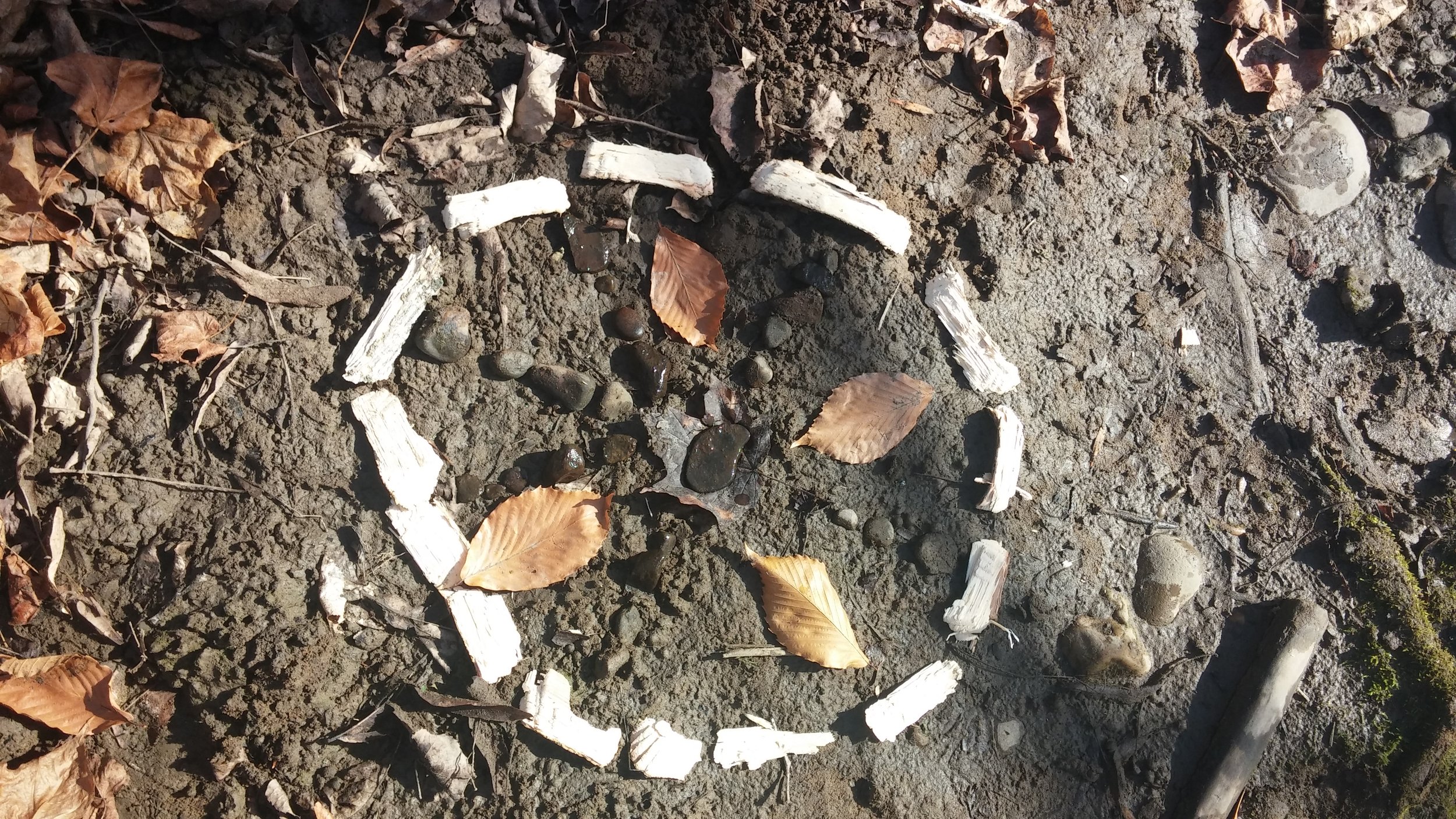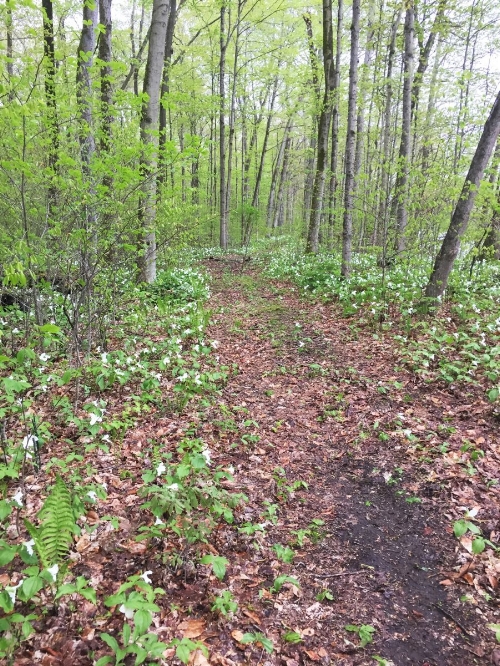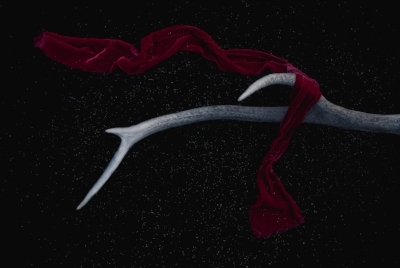
Budget Herbalism
At our most recent Utica Herbal Study Group we discussed the ways in which herbal medicine can be low-cost and accessible. One of the primary offerings of plant-based remedies is that they provide supreme healing to common folks regardless of socio-economic status. Plants grow wild everywhere, even in cities, and many herbs are also considered foods and can be bought right in the grocery store. Many grocery store herbs are inexpensive and can even be purchased with food stamps.
Another, often overlooked, source of herbal medicine happens right in most of our spice cupboards. Cooking herbs and spices can usually be found bottle up and forgotten in our corner shelves and wall racks. There is hardly a household or, at very least, a neighbor or family members household where one can't find a few basic herbal jars of magic already waiting for us in the kitchen. Cooking with herbs is one of humanities oldest traditional methods of supporting health and immunity. These remedies can be added to soups and stews or simply made into teas, compresses, rinses.
Living in Tick Country
Fall is truly upon us now and this is one of the times of the year that ticks seem to be most prevalent in the Northeast/Adirondack foothills. Spring is the other season when they're highly active. During the summer when we may popularly think of ticks being about, they are less of a problem because they don't thrive in hot or dry conditions. Ticks thrive in cold, damp conditions and although they can be present during both winter and summer, they are far more active at spring and fall.
For me this means that I become more vigilant and discerning when I’m out walking, hiking, or wildcrafting. Ticks are found most abundantly in tall grass, brush-like areas such as where you would find goldenrod growing, and in leaf litter on the forest floor. Any place where you may be standing or walking where the vegetation is high enough that it touches your ankles or legs and part of your clothing or person, including hair, is a place where there could potentially be ticks. I know, it’s crazy!
Herbalism and Decolonization
Working with plants, their healing potential, and their influence on human health has opened me to a relationship with nature, place, and herbs that goes far beyond the simple and effective uses of plants as medicines. Plant medicine and herbalism as a tradition belongs to more than just our contemporary impulse to identify, name, label, and cure with “this herb for that”, although this is often the initial spell that so cleverly draws us into the long, lost woods where our ancestors once foraged for talking roots carrying handwoven baskets into places with mythic names and hollow trees that open to the Underworld.
The plants dazzle and enchant us
Even with hardened, colonial hearts we are inspelled.
They have not lost their magick
We follow them back to ours.
Wild Imprints
This all started for me that day when I was four years old and hiking in the Adirondack mountains with my grandfather. He took me along on his daily rounds up the mountain trails above his the cabin where he and my grandma lived, and where he was always tracking the daily activities of the white-tailed deer and collecting his favorite edible mushrooms. We were walking along as usual and I looked off the trail to the slanted rock faces, the smoothed over glacial crevices, the carved ancient grade with brief landings where trees gripped the edges and lifted their branches upwards toward the next turn of rock face toward the zenith.
Invasive Plants and Preaching to the Choir
I am often asked my opinion on how to best address the ongoing trespasses of invasive plant species. What should be done about invasive plants? But I contend that this is an invasive question and would be better reformed to request and express a curiosity about how to actualize and generate healthy plant and ecosystem communities that are in coherent and non-hostile relationship with the past, present, and future conditions of our local bioregions. Living at the edge of the Adirondack Park where there are all-out declarations of war against certain invasive species calling for the use of heavy artillery herbicides with, seemingly, little attention to the geographical, land-centered history of place, I feel these attacks are a bit short-sighted. To be clear, I’m not saying that it’s ok to just allow invasive species to take over. That would be as equally short-sighted. What I speak of is between, within, and both.
Ephemeral Encounters
The steep darkness of a silent, cold Winter can only sustain such strength of contraction for so long. As the wheel of the year turns, the density that has folded in upon itself for months must finally cleave its frozen, shadowed bonds and here, in the Northeastern woodlands, Spring rises from the release of natures iced embrace with an offering of warmth for the hearts and souls of the people.
Once upon a time these awakenings were well marked by magic and ritual as our clans and communities knew that if place and time were to be an instrument for conscious creation, it must be held by the storied, dreaming, dance and play of those that waited and watched as new life teemed upon the surface.
"Today's Tea" Blends
Tea is probably the most ancient of herbal preparation known to humankind. For all of my years of practice making herbal preparations, I still find the medicine in a cup of tea to be strong and effective in many ways. Just the simple act of making tea can create much needed restorative moments of presence within the fabric of our busy lives.
Tea blending is an art, practice, and skill that anyone can learn. I don't follow any steadfast rules, but instead, use my intuition and foundational knowledge of plant properties, taste, and the overall effect I'm hoping the tea will convey. This means that I basically just go into my pantry where my dried herbs are stored and grab whichever jars I'm in the mood for. Some days there is some central issue I want to address with my tea such as an upset stomach, joint pain, winter blues, or a cold/runny nose/cough. The number of herbs required is also dependent on the day and can range from simply one herb or several.
Gathering Smoke~Making Incense From The Land
I recently made a new batch of kyphi style incense from ingredients that I gathered all year long in my bioregion. Kyphi is a type of incense, originating in ancient Egypt, that is made with honey, mead, or some other sweet liquid that is usually alcohol based. There are many Kyphi recipes and, the incense I make is simply derived from this general style that I adapted to my local plants and the consistency I prefer. I have posted my Kyphi recipe in the past, but on recently referring to it for my current batch, I realized that I have changed some things. I also didn't think it was "user friendly" enough. When I cook or concoct, I have a habit of not really measuring; a quality that drives my students crazy and I have been sincerely trying to change how I convey my recipes so that anyone can use them. This is one such attempt, however, I truly believe that, once you get the hang of any recipe, there is room for artful intuitiveness and I encourage everyone to find a comfortable balance between proper proportions and how they personally would like the incense to end up.
Bone Mending
Bone Mending~ As published in We' Moon 2017: a multicultural journal, datebook, and calendar of women's art and writing
The Crucible of Place
My time spent in the woods and wilderness has been my greatest teacher, mentor, spiritual guide and therapist. It's what heals me and where I feel contact with a reality beyond the dullness of superficial reality. I am fortunate enough to live in a relatively wild place that is a habitat of extreme temperatures, rainforest amounts of rain and snow fall, and an array of untamed wonderments that exist within an immense vastness of trees, hills, mountains, rivers, streams and lakes. It is here that I have not only grown to learn the beauty of putting roots deep into the soils of family, friends, community and love of place, but also where I have evolved the focus of my soul's practice as a wandering pilgrim, a colonial exile, and devotee to the divine mystery.
Sacred Plant ID
I have spent more than two decades now studying plants and their medicines. These years have been a great journey that has had many utterly beautiful gifts as well as many intense and growth generating challenges. Every person’s experience and contact with the green nations is unique and for me it is always a sacred activity. By sacred I mean that I have found the beauty, character, qualities, and healing virtues of plants, as well as the whole of nature, to be a dimension of divine creation that, if we are reverent and conscious of, we can become connected with. It has been my experience that with patience, practice, devotion and a heart-centered focus we can begin to perceive and become aware of our innate capacity to understand a meaning and significance of what would normally be invisible or disregarded.
Conversation With A Bog In Ireland
First of all, I had no idea that I was walking on a bog in the beginning. We had just arrived in Ireland and I was anxious to get out on the land.
It just looked like a field any normal field in central New York State where I live. We had asked a local server at the pub why the “holy well” shown on the map seemed to be on private property and how did others access it.
His answer, “Fences are for keeping the sheep in, not people out.” So we climbed through and through and through.
Why I Garden
remember the day a friend asked me why I was wasting so much time tilling and digging and planting and weeding my garden when vegetables were so cheap in the grocery store, especially during the summer. I had to admit, it was a reasonable question that I didn’t really have an answer for. I just gardened unconsciously and never once wondered why I was doing it. It just seemed like something important like doing the dishes. That was all I could say, “I guess I like it.” But it made me think and, since then, I have asked myself the same question over and over until it has become a longstanding internal missive of mine. “Why I garden” has become what I like to call a life thesis that cycles through my day to day during the growing season as I plant rows and pull weeds. I have put this question to not only myself, but to the soil, the seeds, and the green beings with whom I engage in this activity. I don’t expect to ever really have a concrete “answer”, nor do I particularly want one, as I truly enjoy the rush of curiosity such a question incites and prefer to stay in the “asking” state indefinitely. This allows me the joy of contact with the infinite and magical depths of this sacred and ancient human activity with presence while staying open to the authentic responses of my own heart.
Hawthorne~The Faery Tree
The Hawthorne tree, Crataegus spp., is one of the most ennobled trees in the Old Ways of Ireland and the Celtic nations and, when combined with Oak and Ash, forms the sacred tree triad. These three trees each indicate the presence of the Sidhe(Shee) or Faery race. The Hawthorne, specifically, demarcates a bridge or barrier into the faery world. It can be a bridge for those that are prepared for the journey or a barrier for those who have not yet developed the skills required for travel into other realms. It has been often warned that one should not unwittingly fall asleep beneath a Hawthorne for fear of the uninitiated crossing into the otherworld and not knowing how to get back. It is a small tree or large shrub although I've seen some enormous full tree sized Hawthornes. They seem to like to grow in groves and often there will be several in a cluster and, where I live, they shelter many white-tail deer families beneath their thorny branches.
The Four Elements and Traditional Western Herbalism
The four elements are the base fabrics and energetic forms with which many holistic herbal healing traditions enrooted their systems and methods including Traditional Western Herbalism. There are many variations of elemental theory to be found throughout history within almost all healing traditions across the world. Ayurveda in India, Chinese traditional medicine, Greek medicine and the European alchemical tradition are just some of the ancient methodologies that incorporate these elemental energies in various arrangements. In ancient Europe, the definition, identification and origin of the four element theory is attributed to Greek philosopher from Sicily, Empedocles about 440 B.C. and was later expounded upon by Aristotle. Modern herbalism was most notable influenced by elemental philosophy by the Swiss physician Paracelsus who based his medical theory on this canon.
Keeping Hearth~The Practice of Sacred Householding
"HOUSEHOLDER-One who inhabits a house on the Earth while living with God in her heart, or the Goddess in her soul. A difficult sadhana(spiritual practice). In India, one on a spiritual path would be a householder for the first part of the adult life and then become devoted to a solitary practice during the latter years. Sometimes the world catches us though." ~Jeannine Parvati in Hygieia, A Woman's Herbal
I've spent my entire adult life as what can be called a "householder". This is a term that, to me, means that part of the work of my soul on Earth is the work of running a household and all that pertains to it. This type of work, or what one might call "spiritual path", is probably the most challenging and wrought with pitfalls that will test the tinder of the strongest of hearts. The challenges, however, are great teachers that, when mastered, cultivate great reward. I've not always been conscious and grateful for this form of service because I've often found it to be an oppressive burden placed upon me by conscription from a variety of internal and external forces. One being my dearest and most formidable complex of perfectionism along with a solid, well-embedded pattern of OCD. I also inherited my Italian immigrant grandparents motto of toxic shame that still rings in my ears to this day, "We may be poor but we don't have to be dirty," so clean, clean, clean.
















